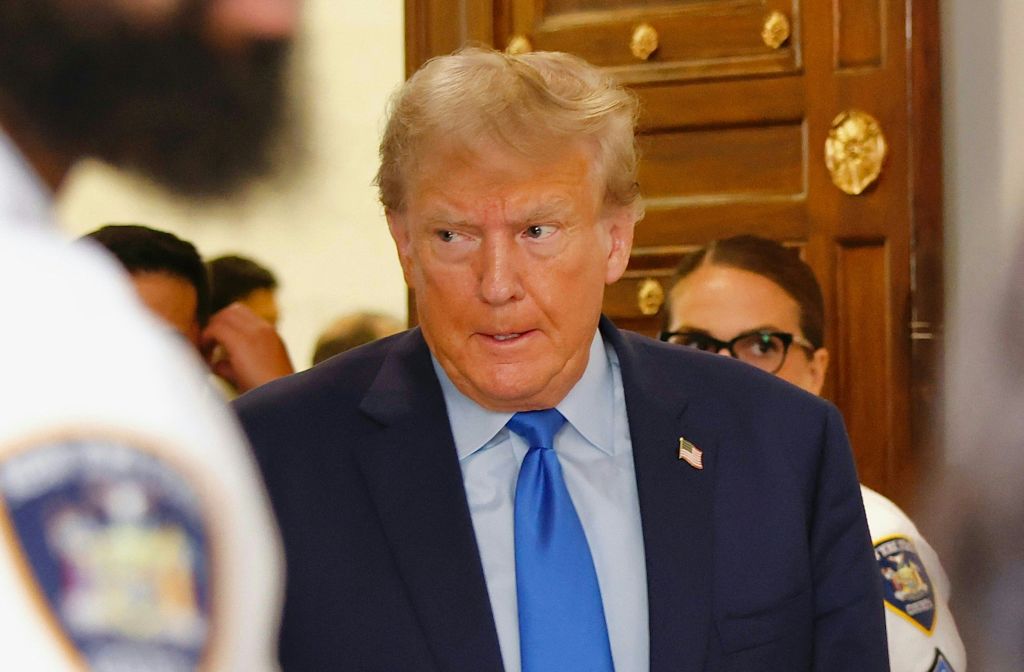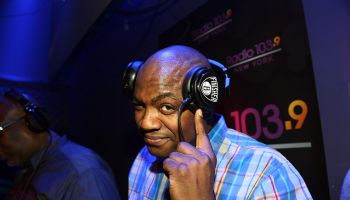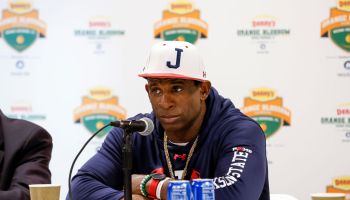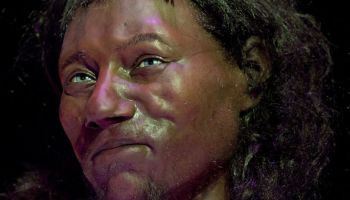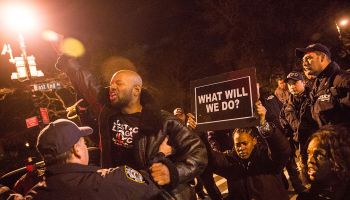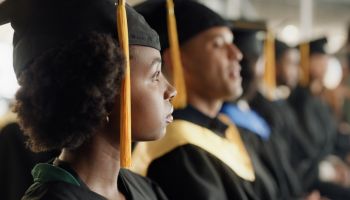This the first installment of a two-part series that examines protesting in the era of Trump. In first installment, NewsOne explores the state of Black Lives Matter, which has all but disappeared from nightly news coverage. In the second piece, NewsOne explores the shift in mainstream media coverage to so-called White working-class protesters as they begin to experience the realities of Trump’s America.
Donald Trump, racist, alleged child rapist, xenophobe, misogynist, sexual predator, and non-tax paying celebrity businessman, is the 45th president of the United States.
Since his election, he has signed executive orders that directly target Black and brown folks, including Muslims, Mexicans and other Latinos.Other measures have been aimed at gay and transgender people, and women and children. He has even threatened to “send in the feds” to Chicago’s South Side, which only serves to punish Black people for living in under-resourced neighborhoods, and where cultural pathologies around Blackness, crime, and violence are exaggerated in the White imagination.
“The Trump administration promotes personal loyalty and fidelity to an old, discriminatory social and political order,” Williams College Africana Studies professor Joy James tells NewsOne. “[Their] economic nationalism is White nationalism favored by a sizable number of Whites and wrapped in the rhetoric of racial threat[s] in which Whites are always the victims.”
But who is going to stop him? Surely not the Republican Congress or defeated Democrats. Indeed, today BlackLivesMatter activists, who were once a nightly fixture on cable and network news broadcasts from 2013-2016, continue their work at the grassroots level away from the glare of the national spotlight. They are working to shield poor Black and brown folks, not only from Trump’s harmful executive orders, but also working to dismantle intraracial violence, including murder, rape, interpersonal assault and attacks on Black transgender women, leaders tell NewsOne.
Nearly four years after its founding in 2013, when George Zimmerman escaped conviction for the shooting death of Trayvon Martin in Sanford, Florida, and almost three years after #BlackLivesMatter went viral when Michael Brown Jr. was slain by now ex-police officer Darren Wilson in Ferguson, Missouri, the movement continues to grow and evolve.
Today, it boasts over 26 chapters across the United States, Canada and parts of Europe. Its prominence as a Black-led organizing project is due, in part, to community events like the Labor Day Weekend 2014 Black Lives Matter freedom rides, and the organizing strategies of Ferguson and St. Louis residents Johnetta Elzie, Tef Poe, Ashley Yates, Larry Fellows, Alexis Templeton and Brittany Ferrell, among so many others.
Their work continues even as some of their compatriots face political imprisonment and state surveillance. For example, California BLM activist Jasmine Abdullah has been charged with felony lynching, and Ferguson, Missouri activist Josh Williams is serving an 8-year-sentence on arson and burglary charges.
“What is working in our movement, from our direct actions to marches, is shifting a large lie about America being post-racial because we elected a Black president,” Allen Frimpong, a member of Black Lives Matter NYC and Movement NetLab, tells NewsOne. “What this movement gets to shift is its capacity to support and absorb people, who are newly active as a result of the Trump presidency, to organize locally and be intergenerational in our approach.”
Working at a grassroots level
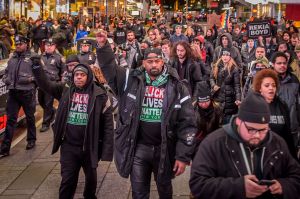
Source: Pacific Press / Getty
For its part, BLM NYC does not need the glow of television klieg lights to do its work. The group, in partnership with the Coalition to End Broken Windows, the Black Youth Project, and the Black Alliance for Just Immigration, runs #SwipeItForward, a campaign designed to hand out free subway rides to prevent police from arresting poor people of color, especially undocumented immigrants, who cannot pay for public transportation. And NYC Shut It Down: The Grand Central Crew #BlackLivesMatter, among others, continues its efforts to draw attention to racial injustice through demonstrations.
These efforts are not “spectacular” in the media gaze, but they dramatically impact the everyday realities of Black and brown people in communities that are victims of Trump’s militarized policing and ICE raids.
“Real power lies in our communities, towns, cities and states,” said Charlene Carruthers, national Director of the Black Youth Project 100 (BYP100), a signatory of the Movement for Black Lives policy platform. “We have to build local power. Our people can’t afford for us to cower and move to the middle. This administration won’t make any concessions just because we accommodate it.”
White nationalism returned to the forefront of American politics in the wake of President Barack Obama’s two-terms in office and the people power of the Black Lives Matter Movement. To this point, BLM cofounder Patrisse Cullors urges activists and people of color to “resist, organize, resist” – words that echo the fortitude of activists like Stokely Carmichael, Ida B. Wells-Barnett, Angela Davis and Malcolm X.
Some argue that Black Lives Matter lost its political verve when leaders decided to not endorse a presidential candidate, while others note the hypocrisy of gesturing towards some leaders’ implicit support of former presidential candidate Hillary Clinton. These political differences are significant. Movements never have singular vantage points, and there is surely a spectrum with regards to Black liberation and leftist politics.
Charlene Carruthers, national Director of the Black Youth Project 100 (BYP100), a signatory of the Movement for Black Lives policy platform, contends that the movement’s emphasis needs not solely rest on what happens in Washington and on Capitol Hill, but rather on what happens at the local level to people of color.
“Real power lies in our communities, towns, cities and states,” said. “We have to build local power. Our people can’t afford for us to cower and move to the middle. This administration won’t make any concessions just because we accommodate it.”
Resist, Organize, Resist
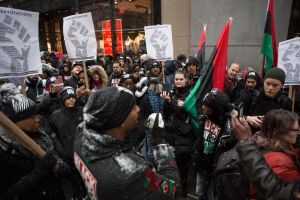
Source: Kevin Hagen / Getty
Without question, the movement’s focus has not only been on Trump and police violence, but activists stress the necessity of dismantling intraracial violence, including but not limited to rape, interpersonal assault and the brutal murders of Black trans women, who often receive no public mourning or movement outcry.
“Cis[gender] folks need to be in courageous conversations with other cis folks about the ways we perpetuate transphobia,” Cullors says.
Janisha Gabriel, a member of BLM NYC and the founder and director of the Speak My Name Project, says the adaptation of the movement requires internal searching and healing.
“This moment necessitates that our work be intraracially intersectional. Black people must center and fight for all Black people,” says Janisha Gabriel, a member of BLM NYC and the founder and director of the Speak My Name Project. “Fighting for all Black life, as Black people, requires us to do some internal searching and healing.”
“This moment necessitates that our work be intraracially intersectional. Black people must center and fight for all Black people,” Gabriel says. “Fighting for all Black life, as Black people, requires us to do some internal searching and healing.”
Elle Hearns, executive director of The Marsha P. Johnson Institute and former organizing director and founding member of The Black Lives Matter Network says the power of the movement “has never been in the White House, but in each other.”
“It is that power that will continue to build a movement reflective of how to address the issues affecting marginalized communities in this country and
Trump’s cabinet may be filled with transantagonistic, racist, corporate elites, but our communities and our movements need not be a reflection of the administration’s anti-immigrant, anti-women, anti-Black policies.
Black Lives Matter activists at the grassroots level continues to raise the mirror of righteous indignation toward America’s very White and angry faces. White supremacists may break the glass, reject truth, and believe in lies and alternative facts of their own making, but the shattered pieces remain with each broken piece illuminating pro-Black movements in an anti-Black world.
In fact, while being ignored by the mainstream media, Black Lives Matter remains standing and active as an indictment of the status quo, including Trump and all White supremacists.
Ahmad Greene-Hayes is a doctoral student in the Departments of Religion and African American Studies at Princeton University. He also currently serves as an inaugural cohort fellow of the Just Beginnings Collaborative (2016-2018), where his project, Children of Combahee works to eradicate child sexual abuse in Black churches. Follow him @_BrothaG.
SEE ALSO:
